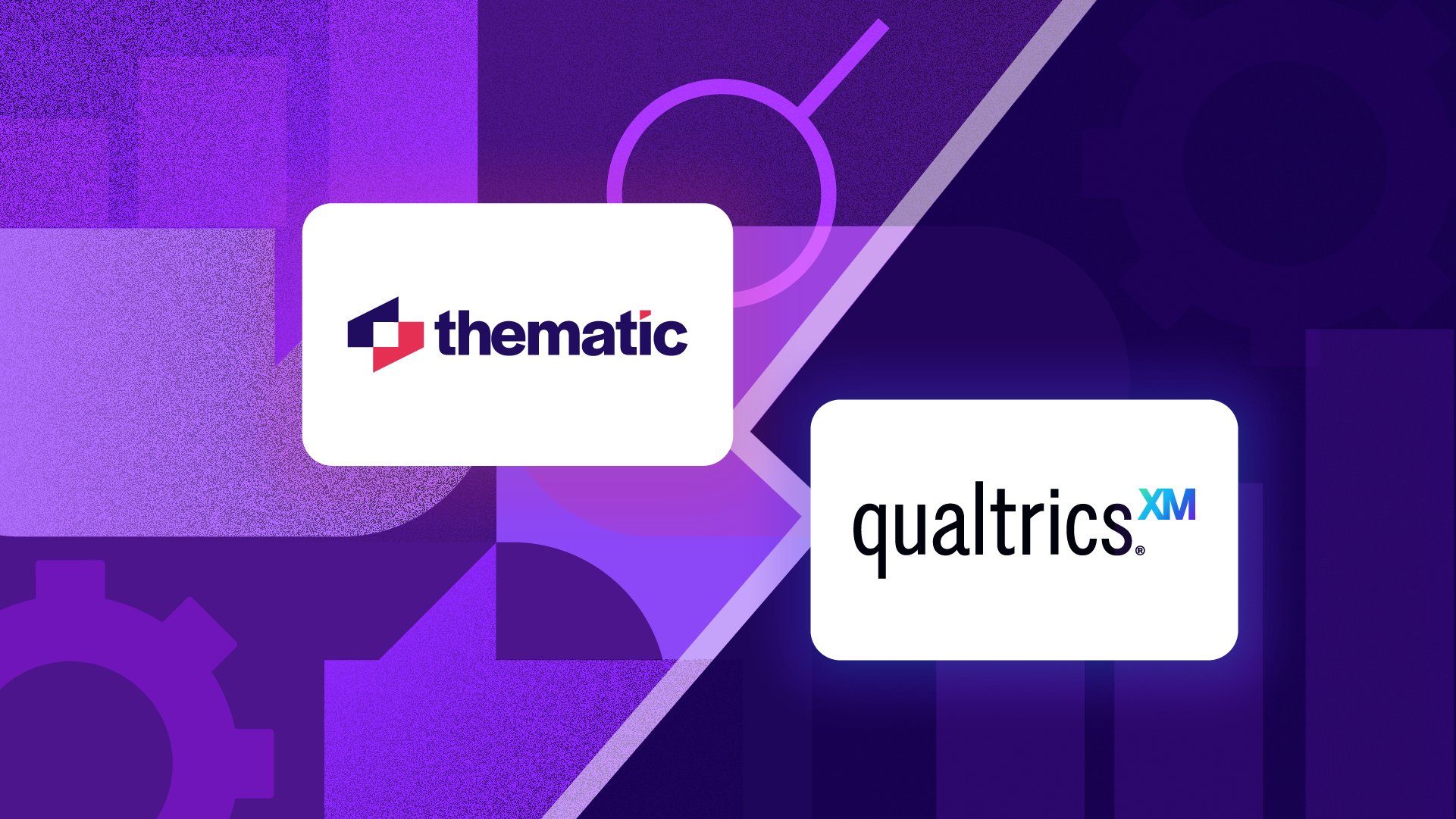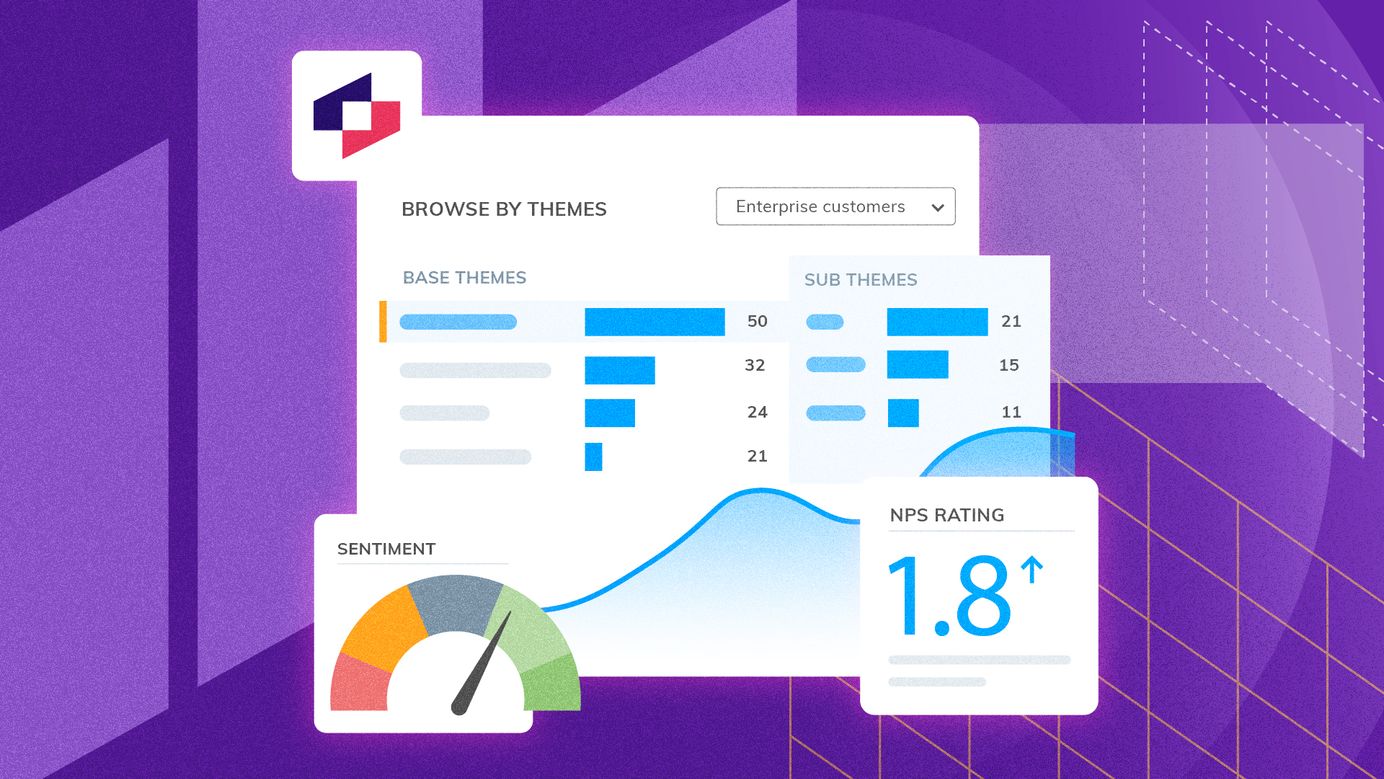
How to leverage your customer insights for growth in 2019
If you have a big growth goal to reach in 2019, you can leverage your customer insights from your Voice of Customer (VOC) data to achieve it. And on the flip side, if you have already invested in a VOC initiative, there are multiple ways you can use this data to influence your company growth.
4 areas to utilize your customer insights
As an example, here are some ways you can utilize your customer insights from your VOC data, which all tie into driving your company’s growth in one way or another. Use VOC to inform activities in these areas:
1. Customer experience
Understand how satisfied your consumers are at different touchpoints, and their willingness to recommend your brand to others.
2. Product development
Your customer insights can help you get feedback on new product ideas, and understand price sensitivity, determine when to retire products.
3. Reputation management
Monitor your brand’s reputation in the marketplace.
4. Market and competitive intelligence
Using customer insights to understand consumer buying patterns and preferences, capture trends, social and environmental impacts on buying behaviors; find out what customers say about competitors.
Knowing your customers deciding factor for success rate
Each and every one of these can launch an initiative in itself, however the field which we often, justifiably, focus on is customer experience. This is because understanding your customers really does have a major impact in knowing what in your business works and what doesn’t.
Knowing what annoys your customers, what they like and where you can improve, and specifically which touch points are not working well, will be the deciding factor in your businesses success rate.
More data does not equal better insights
The customer is king in today’s customer-driven market. Just look at big, globally successful players like Apple, Amazon, Airbnb and there’s no arguing this point. So, VOC becomes even more crucial because even though we might have more data, ergo, more transparency, this also leads to more uncertainty. How? Well, more data per se does not always mean better insights, nor decisions.
In fact, we can all relate to the problem of having too many options, too much information – sometimes it doesn’t help, in fact it only hinders a good decision to be made.
Instead of “more data” we need “better data” or in fact, insightful data, and meaningful, actionable insights to be drawn from data. So, companies need authentic human insight from their customers to make better business decisions, and thereby drive growth.
So, if we all agree that the customer’s voice is important, and that our customer insights need to feed into our growth strategy, let’s take a closer look to see how this can play out.
3 ways VOC insights feed into your growth strategy
Creating a solid growth strategy takes a lot of pieces working together such as your processes, systems and tools including the data and analytics. (See below for a visual you can pin on your wall!)
To be able to excel in growth you need these following three essentials working flawlessly at a basic level.
- Focusing on high performance and the right type of measurement – planting the seeds to engrain this into your culture will be key.
- Creating a data-driven culture which focuses on the customer every step of the way. As a part of this culture should evolve a process for deriving meaningful insights from customer data on a regular basis.
- Having the right systems and tools to implement insights, and the right processes in place to drive efficiency to achieve growth, every day.
As you can see, customer data and VOC insights will be the key to your foundation in steps 2 and 3. And, once you have implemented this 1-3 step plan once, (listened to your VOC feedback and identified meaningful insights to then implement them) the steps 2 and 3 will inform your step 1 (what to measure, how your performance ties in to your insights), when the time comes around to measure and implement new goals again.
Using your customer insights to define 5 key points
In this day and age, when the customer is the one shaping the business strategy, aka the Age of the Customer, it’s not as easy as it used to be to create a strategy for growth. (In fact, nothing is as easy as it “used to be”!)
All of a sudden, having access to mountains of data, means there are more opportunities but also more challenges than ever before. Therefore, once you have kicked off your VOC initiative, and you have organized your data, you should identify the following five points when analyzing your data.
(And remember, you can do this even if you are not the one analyzing your data yourself, or if you use a text analytics solution to do so).
- Which customer segments are opportunities for growth
- Which products and services are opportunities for growth
- What existing and (types of) potential customers you can engage and motivate to buy more
- What materials and assets, such as content, should be highlighted and amplified
- How and when you distribute these assets and through which channels
The aim is to sync the content to the customers’ buying process as much as possible. For this purpose, it is absolutely essential to gather data from as many reliable sources as possible, and subsequently, a lot is riding on your internal team’s ability to collect, manage and analyze data. Thus, it can be extremely helpful to employ an automated solution to organize and analyze your data for you.
Once you have defined these five areas, you can divide and conquer your efforts into different work streams that all have the same objective: drive growth.
3 big growth mistakes businesses often make
1. Not having the right capabilities
Often, businesses have either a shortage of resource or time when it comes to collecting data, (correctly) analyzing it and identifying valuable, actionable insights from data. All important steps which are needed to influence growth.
Taking the time to execute these well, can be all the difference between a failing growth strategy and a successful one. In order to utilize your data properly, as a basis on which to make decisions to influence growth, you will need a reliable solution to fulfil all of these steps.
Using an outside, an automated provider can help as it often is quicker, more reliable, and ensures that any lessons from data are well documented. It also brings in an outsiders’ POV which often is extremely valuable.
2. Fail to understand their customers’ journey
Sure, you have heard this one before, but for a good reason. Not fully understanding, or failing to acknowledge an important part of, the customer journey, means that somewhere along the line your customer journey (or buyers cycle) has a bottleneck, or even worse, a leaking bucket.
This is why it’s so important to listen to your customer feedback, and have a solid VOC strategy in place. Even if you get tonnes of negative feedback, this is, in fact, a good thing! You should welcome negative feedback as it will provide you with a foundation on which to create a strategy for change, you will finally know what is not working in your business. And if that is not setting the scene for some big AHA-moments, I don’t know what is.
Also, the best way to gather insights on what prompted customers to buy from you is to ask. Gather feedback around every step of the customer journey so you can better understand what prompted customers to buy, or what turned them off.
3. Not being personal enough
Yes, personalisation is a big one, and not just for marketing initiatives. If you can’t be personal, for every touch point (including retail, website, customer service, delivery, chatbot, email etc) where you connect with customers, you’re not keeping up with the Joneses.
One of the best ways to boost customer (or user) experience is through personalization. As many as 74% of customers get annoyed when content they receive has nothing to do with them personally (says HSO).
How do you know how you can be personal? If you have a regular conversation with your customers, you’re already a step ahead. Otherwise, just ask. Collecting customer insights means that your collecting data on a regular basis and then all you have to do is: listen.

Stay up to date with the latest
Join the newsletter to receive the latest updates in your inbox.




